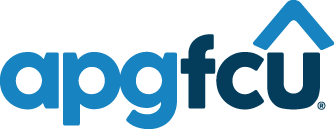The U.S. Department of Education’s Federal Student Aid (FSA) application for student loan debt forgiveness launched on Monday, October 17, 2022, following President Biden’s August 2022 Student Debt Relief Plan announcement. While this announcement has captured the attention of the 45 million Americans currently struggling under the weight of their student loans,1 it has also attracted scammers and cybercriminals who are actively targeting borrowers for financial gain.
Scammers are creating fraudulent websites disguised as the legitimate application form which, when entered, will ask for personal and financial information. Criminals are also calling, emailing and texting student loan borrowers as well as their beneficiaries, with the promise of helping with loan discharge, forgiveness, cancellation or debt relief for a fee. Communications from scammers will often include official-sounding names, seals and logos, so being aware of their ploys is key.
Let’s take a look at a few red flags to watch for when applying for student debt relief:
There’s a Fee to Apply
Applying for student loan forgiveness is free and no borrower will ever have to pay for assistance with their federal student aid. Any request to pay for enrolling in or processing the application should be taken as fraud.
The Federal Trade Commission (FTC) said in a consumer alert, “Anyone who guarantees approval or quicker forgiveness: scam, scam, scam.”2
Applying on Anything Other Than StudentAid.gov
Currently, the legitimate application is only online in English and Spanish. A paper application will be available at a later date. Never give your information to a third-party person or website offering to apply on your behalf. If you are not on StudentAid.gov, you’re on the wrong site.
Requesting to Upload Personal and Financial Documents
The first phase of the application process is simple, only asking for a name, birth date, Social Security number, phone number and address. You will not be asked to upload or attach personal or financial documents, including your FSA forms or ID, bank statements, credit card information or tax returns.
As the program is only available to single filers making less than $125,000 per year or married joint filers or heads of households earning less than $250,000, certain applicants may be required to verify their income later in the process – but not during the application.3
Odd Email Addresses
Once you have submitted your application for forgiveness, you should expect emails to come from the Department of Education, which may include updates on your application or requests for tax documents verifying your income. It is crucial to closely examine the “from” address on any email you receive to ensure it is not a scam. Legitimate emails to borrowers will only come from:
If your student debt forgiveness application is denied, follow the Department of Education’s instructions in the email you will receive. If you have questions on the application, your status or the next steps, please call the FSA’s dedicated number at 1-833-932-3439.
You can report scam attempts to the FTC at 1-877-382-4357 or reportfraud.ftc.gov.
Monitor our Security page for the latest on scams and how to keep your information secure.
1https://www.whitehouse.gov/briefing-room/statements-releases/2022/08/24/fact-sheet-president-biden-announces-student-loan-relief-for-borrowers-who-need-it-most/
2https://consumer.ftc.gov/consumer-alerts/2022/10/now-student-loan-debt-relief-application-open-spot-scams
3https://www.wolterskluwer.com/en/expert-insights/president-announces-student-loan-forgiveness-eligibility-details-application-and-tax-implications#:~:text=Who%20qualifies%20for%202022%20student,couples%20or%20heads%20of%20household.
